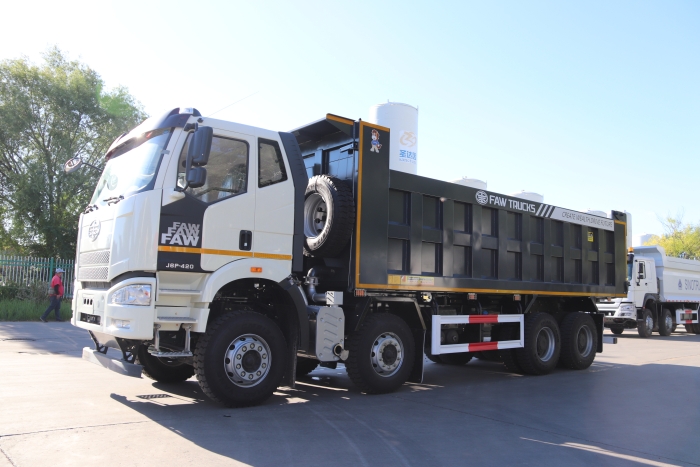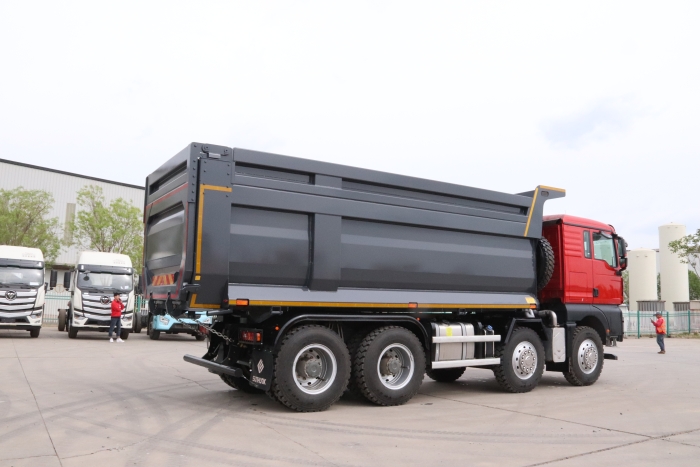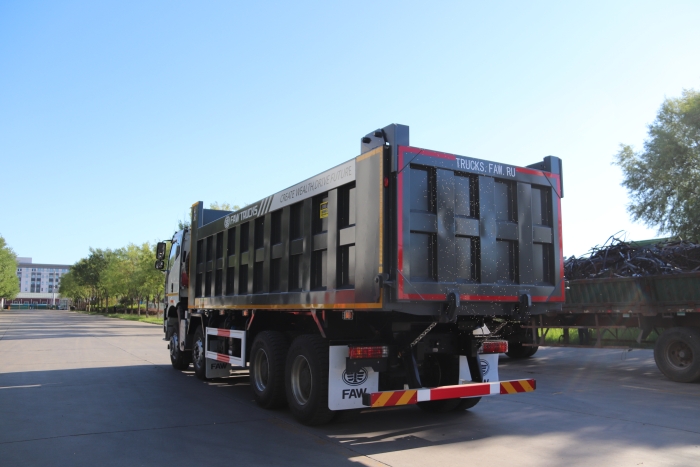- PRODUCTS
- SOLUTION
- SERVICE
- NEWS
- ABOUT US
Yes, car hauler semi-trailers are highly suitable for long-distance transportation, offering efficiency, safety, and adaptability for various vehicle types.
Car hauler semi-trailers, pivotal in the automotive transport industry, serve as specialized equipment designed for the efficient and secure transportation of vehicles over long distances.
They fall into two primary categories: open and enclosed trailers.
Open car haulers are the most common type, characterized by their exposed decks, allowing for the transportation of a larger number of vehicles simultaneously. These trailers can typically carry between 5 to 9 vehicles, depending on their size and configuration. The open design facilitates easy loading and unloading but offers less protection from the elements and road debris.
Enclosed car haulers, on the other hand, offer a completely covered transport environment, providing enhanced protection against weather, dust, and potential road damage. While they tend to have a lower capacity, usually accommodating 2 to 6 vehicles, the added security makes them the preferred choice for transporting high-value, luxury, or vintage automobiles.

The design and structure of car hauler semi-trailers are meticulously planned to meet the rigorous demands of long-distance transportation. Essential elements such as the frame, loading tiers, and securing mechanisms are pivotal.
The frame of the trailer is constructed with high-strength steel or aluminum to ensure durability and to support the weight of multiple vehicles. The choice of material balances the need for structural integrity with the benefits of lighter overall weight, contributing to fuel efficiency.
Loading tiers are strategically designed to optimize space and vehicle capacity. Most open trailers feature a double-deck design, allowing cars to be loaded on both an upper and a lower level. The configuration of these decks, including adjustable ramps and hydraulic lift systems, enables the accommodation of vehicles of varying sizes and heights, ensuring a versatile transport solution
Securing mechanisms are critical for the safe transport of vehicles. They include wheel straps, chains, and ratchet tie-downs, designed to hold vehicles in place during transit securely. Proper use of these mechanisms is essential to prevent movement and potential damage, especially over long distances and through varied terrain.
Incorporating advanced engineering and thoughtful design, car hauler semi-trailers are optimized for long-haul transport. Their construction considers factors such as aerodynamics to reduce drag and improve fuel efficiency, with some trailers featuring streamlined shapes and additional fairings. The operational efficiency, coupled with the ability to transport a significant number of vehicles in a single journey, underscores their value in the automotive logistics chain.
For detailed insights and further information, exploring resources like Wikipedia's page on semi-trailers can provide a comprehensive understanding of the intricacies involved in the design and functionality of car hauler semi-trailers.
Car hauler semi-trailers stand out in the automotive transport sector for their robust vehicle carrying capacities and operational efficiencies.
The vehicle capacity of a car hauler semi-trailer varies significantly based on its design and configuration. Open car haulers typically boast a capacity to transport 5 to 9 vehicles, depending on the model and arrangement of the decks. Enclosed trailers, prioritizing protection over quantity, accommodate 2 to 6 vehicles. These numbers are not static; innovative designs and modular structures allow for adjustments to meet specific transport needs.
For instance, a two-level open car hauler might carry up to 8 passenger cars. In contrast, a more compact design, aimed at heavier vehicles, might transport fewer units but of greater individual weight. The key lies in the trailer's ability to adapt to different vehicle sizes and shapes, maximizing every available inch of space.
Transportation efficiency in car hauler semi-trailers encompasses several facets, from loading and unloading convenience to impact on transport time. The integration of hydraulic ramps and multi-level stacking systems enables quick and safe loading/unloading processes, significantly reducing downtime and labor costs.
Loading and Unloading Convenience: Advanced car haulers are equipped with hydraulic lifts and ramps that facilitate swift vehicle loading and securement. This technology not only speeds up the preparation for transit but also minimizes the risk of damage, ensuring vehicles arrive in pristine condition.
Impact on Transport Time: Efficiency extends beyond the loading dock. The streamlined design of modern car haulers reduces air resistance, enhancing fuel economy and allowing for faster travel speeds within safety regulations. Furthermore, the capacity to carry multiple vehicles in one trip cuts down on the need for multiple journeys, directly impacting delivery schedules and reducing overall transport time.
A closer look at the numbers reveals the balance between capacity and efficiency. For example, a fully loaded car hauler traveling from Los Angeles to New York can complete the journey in approximately 5 days, assuming optimal road conditions and adherence to driving hour regulations. This efficiency in delivery time is paramount for dealerships awaiting new inventory or for auction houses preparing for upcoming sales.
Incorporating features like GPS tracking and real-time monitoring further elevates the efficiency of car hauler semi-trailers, allowing logistic teams to optimize routes and anticipate potential delays. This level of operational transparency ensures that all parties involved, from shippers to receivers, remain informed and prepared for the vehicles' arrival.
For an in-depth exploration of vehicle transport logistics and the role of semi-trailers, Wikipedia provides a wealth of information on the subject, offering insights into the technical and operational aspects of these essential vehicles in the global transport ecosystem.

Understanding the comprehensive cost structure of using car hauler semi-trailers for vehicle transportation is crucial for businesses aiming to manage expenses effectively. This analysis delves into both direct and indirect costs associated with the operation of these trailers over long distances.
These costs are tangible and directly affect the bottom line of transportation operations.
Fuel Consumption: The most significant direct cost comes from fuel consumption. The average fuel economy for a loaded car hauler semi-trailer ranges from 6 to 8 miles per gallon (MPG), depending on the weight of the load and the terrain. Considering a cross-country trip of approximately 3,000 miles, and assuming an average diesel price of $3.00 per gallon, the fuel cost alone can range from $1,125 to $1,500 per trip.
Maintenance and Repair: Regular maintenance and unexpected repairs constitute a considerable portion of direct costs. On average, maintenance costs for a semi-trailer can range from $0.10 to $0.15 per mile. This includes routine inspections, tire replacements, brake repairs, and other necessary upkeep to ensure safety and efficiency. For the same 3,000-mile trip, maintenance costs can amount to $300 to $450.
Indirect costs, while not as immediately apparent as direct costs, also play a significant role in the overall cost structure. These include insurance premiums, potential cargo loss or damage, and depreciation.
Insurance Premiums: Insurance costs for car hauler semi-trailers can vary widely based on factors such as the value of the cargo, the driver's experience, and the operating region. On average, annual insurance premiums can range from $5,000 to $12,000 per trailer, translating to a significant per-trip cost when amortized over the number of trips made annually.
Potential Cargo Loss or Damage: While not a guaranteed expense, the risk of cargo loss or damage must be accounted for. The cost associated with these risks can vary, but implementing comprehensive insurance coverage can mitigate financial impacts. The premium for such insurance, however, will contribute to the overall indirect costs.
Depreciation: The depreciation of a car hauler semi-trailer affects the long-term financials of transportation operations. A new trailer, costing between $70,000 and $100,000, can depreciate approximately 15% to 20% in its first year and about 10% annually thereafter.
Incorporating both direct and indirect costs into the financial planning process is essential for a comprehensive understanding of the economic dynamics of using car hauler semi-trailers for long-distance vehicle transportation. For additional resources and detailed explanations on transportation economics, the Wikipedia page on transport economics offers valuable insights into cost factors, efficiency, and economic principles applicable to the logistics and transportation industry.
The adaptability of car hauler semi-trailers for long-distance transportation hinges on their durability, reliability, and safety features.
The durability and reliability of car hauler semi-trailers are critical for long-haul operations. Manufacturers construct these trailers with high-grade materials such as reinforced steel or aluminum to endure the stress of constant use and heavy loads.
Adaptability to Extreme Weather: Car hauler semi-trailers are equipped to handle extreme weather conditions, from scorching heatwaves to freezing blizzards. Features like weather-resistant paint, corrosion-resistant components, and waterproof electrical systems ensure that trailers maintain their integrity and functionality regardless of the elements.
Road Condition Resilience: The structural design includes robust suspension systems capable of absorbing shocks from uneven road surfaces, reducing the risk of damage to the vehicles being transported. Advanced models come with adjustable suspension settings, allowing drivers to modify the ride height based on load weight and road conditions, enhancing stability and safety.
Safety remains a paramount concern for manufacturers and operators of car hauler semi-trailers, especially over long distances.
Braking Systems: Modern car haulers are equipped with advanced braking systems such as Anti-lock Braking Systems (ABS) and Electronic Braking Systems (EBS), providing drivers with greater control under heavy loads and at high speeds. These systems significantly reduce stopping distances and improve handling during emergency braking scenarios.
Lighting and Visibility: Adequate lighting is essential for the safety of long-haul transport. LED lights for brake lights, turn signals, and clearance lights ensure the trailer is visible at all times, even in low visibility conditions. Reflective markings along the sides and rear of the trailer also enhance night-time visibility to other road users.
Emergency Facilities: Emergency facilities, including fire extinguishers, first-aid kits, and breakdown warning signs, are readily available on board. These precautions ensure quick response capabilities in the event of an incident or breakdown, safeguarding both the operator and the cargo.
The continuous evolution of design and technology in car hauler semi-trailers aims to meet the demanding requirements of long-distance transportation. From the robustness needed to withstand diverse environmental challenges to the implementation of sophisticated safety systems, these trailers are a testament to the industry's commitment to efficiency, reliability, and safety. For those interested in the technical aspects and safety standards of transportation equipment, the Wikipedia page on semi-trailer trucks provides comprehensive information on the subject, offering insights into the innovations and regulations shaping the future of vehicle logistics.

Car hauler semi-trailers, essential for long-distance vehicle transportation, require meticulous maintenance and face numerous operational challenges. Ensuring their reliability and efficiency necessitates a comprehensive understanding of potential issues and the implementation of effective strategies to mitigate them.
Maintenance of car hauler semi-trailers is crucial for preventing downtime and ensuring the safety of both the cargo and the operator. Regular and preventive maintenance routines are essential to address common faults and extend the trailer's service life.
Common Faults: Key areas prone to wear and tear include tires, brakes, hydraulic systems, and electrical components. Tires, for instance, can suffer from uneven wear due to improper alignment or inflation, leading to increased replacement costs and potential safety hazards.
Preventive Measures: Implementing a strict maintenance schedule is the most effective preventive measure. This includes regular inspections, timely parts replacement, and immediate attention to any signs of wear or damage.
Operators of car hauler semi-trailers face several challenges during long-distance transport, from driving skills to route planning and cargo management.
Driving Skills: Maneuvering a loaded car hauler requires advanced driving skills, particularly in navigating tight turns, reversing, and managing the increased stopping distances. Drivers must also be adept at adjusting driving techniques based on load weight and road conditions to maintain safety and control.
Route Planning: Effective route planning is essential to avoid low bridges, tight roads, or areas with heavy traffic congestion. Utilizing GPS navigation systems tailored for commercial transport can help identify the most efficient routes, taking into account the specific dimensions and weight limitations of the loaded trailer.
Cargo Management: Properly securing the vehicles on the trailer is paramount to prevent movement and potential damage during transit. This includes using the right tie-down methods and regularly checking the security of the load throughout the journey. Operators must also be knowledgeable about weight distribution to ensure the trailer remains stable and within legal weight limits.
By prioritizing preventive maintenance and equipping operators with the necessary skills and tools, transportation companies can minimize downtime, reduce costs, and ensure the safe delivery of vehicles. For a deeper dive into the maintenance and operational considerations for semi-trailers, the Wikipedia page on vehicle maintenance offers valuable insights into best practices and strategies for maintaining commercial transport vehicles.